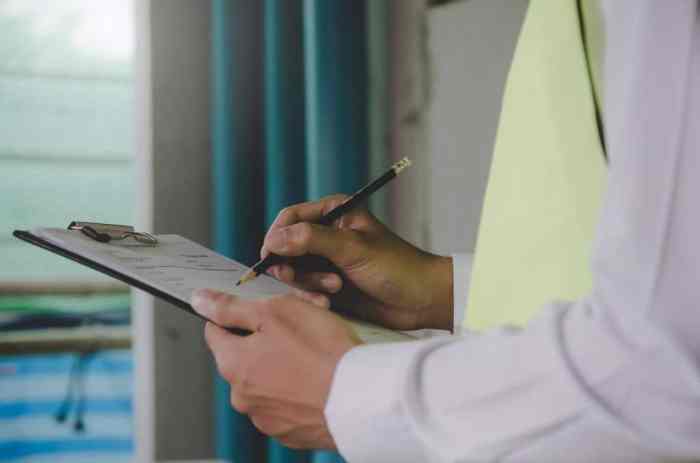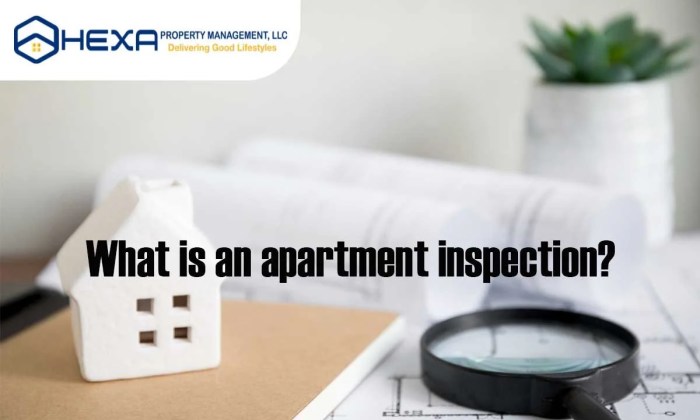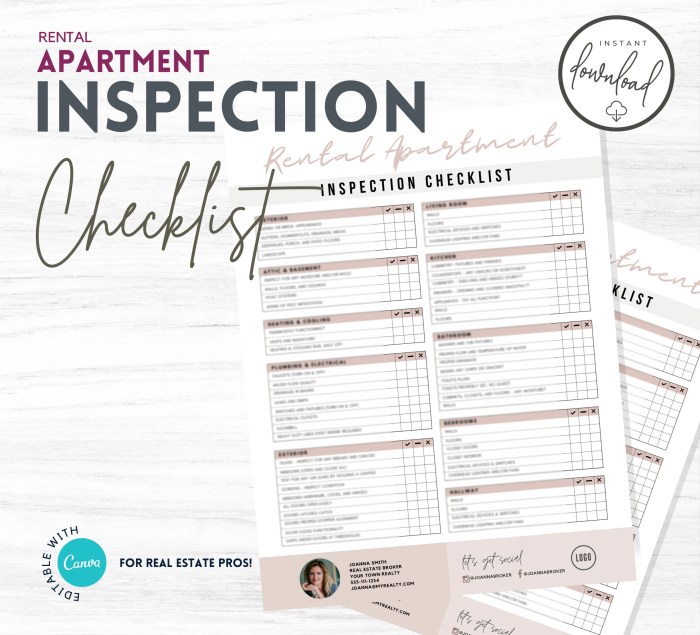What to look for in an apartment inspection is crucial for anyone considering a new home. An apartment inspection offers a chance to uncover hidden issues that could affect your living experience, from structural concerns to signs of neglect. By understanding the key elements to examine, you can make an informed decision that safeguards your investment and well-being before signing a lease.
This process not only involves a thorough examination of the property but also assesses safety features and compliance with local regulations, ensuring that your new living space meets all necessary standards. Equipped with a reliable checklist and knowledge of common issues, you’ll be better prepared to navigate potential pitfalls and negotiate effectively with landlords.
Inspection Basics

Prior to moving into an apartment, conducting a thorough inspection is essential to ensure that the living space meets your expectations and is free of potential issues. This process allows you to identify any hidden problems that could lead to costly repairs or inconveniences in the future. A proactive approach during the inspection can save you time, money, and stress down the line.A complete apartment inspection encompasses several critical elements that should not be overlooked.
These elements provide a comprehensive picture of the apartment’s condition, safety, and overall livability. It’s important to take a methodical approach and address both the visible and less apparent areas during your inspection.
Critical Elements to Examine During the Inspection
There are key areas to focus on during the apartment inspection. Assessing these elements can greatly influence your decision to rent or negotiate repairs before moving in.
Expand your understanding about common mistakes when renting an apartment with the sources we offer.
- Structural Integrity: Check for cracks in walls, ceilings, or floors that may indicate underlying issues.
- Plumbing: Inspect faucets, toilets, and pipes for leaks and ensure that there is adequate water pressure.
- Electrical Systems: Test light switches and outlets to ensure they are functional and check for any exposed wiring.
- Heating and Cooling: Verify that heating and air conditioning units are operational and in good condition.
- Windows and Doors: Ensure that all windows and doors open and close properly and check for drafts or broken locks.
- Appliances: If appliances are included, test them to confirm they work efficiently.
- Safety Features: Look for smoke detectors, carbon monoxide detectors, and fire extinguishers.
- Pest Infestation: Keep an eye out for signs of pests, such as droppings or damaged materials.
The following checklist can help ensure that no critical areas are missed during the inspection:
Inspection Report Checklist
An organized checklist can streamline the inspection process, allowing for a more systematic evaluation of the apartment’s condition.
| Inspection Area | Details to Check |
|---|---|
| Structural Integrity | Cracks, warping, and water damage signs. |
| Plumbing | Pipes for leaks, faucet functionality, toilet performance. |
| Electrical Systems | Functionality of outlets and switches, condition of wiring. |
| Heating and Cooling | Operational status of HVAC systems. |
| Windows and Doors | Functionality, locks, and insulation against drafts. |
| Appliances | Functionality and condition of included appliances. |
| Safety Features | Presence and functionality of smoke and carbon monoxide detectors. |
| Pest Infestation | Signs of pests and overall cleanliness. |
“An apartment inspection is not just a formality; it is your first line of defense against potential living issues.”
Common Issues to Look For

When inspecting an apartment, it is crucial to identify common issues that could affect your living experience. Recognizing these problems early can save you from costly repairs and ensure that the space meets your needs and expectations. This section delves into frequent issues encountered during inspections, along with signs of water damage, mold, and the condition of appliances and fixtures.
Frequent Problems Found in Apartments
Several issues are commonly observed in apartment inspections, and being aware of them can guide your assessment. The following are significant concerns to check during your inspection:
- Water Damage: Look for discolored spots on ceilings and walls, which may indicate leaks or water intrusion.
- Mold Growth: Check for musty odors and visible mold, particularly in bathrooms and areas with poor ventilation.
- Pest Infestations: Inspect for droppings, nests, or damage caused by rodents or insects.
- Structural Issues: Look for cracks in walls or foundations, which may signify serious structural problems.
- Electrical Problems: Test outlets and switches to ensure they function properly and check for exposed wiring.
Signs of Water Damage and Mold
Water damage can lead to mold growth, which poses significant health risks. Recognizing early signs is essential. The following indicators can help you identify issues related to water damage:
- Stains and Discoloration: Yellow or brown stains on walls and ceilings typically indicate previous or ongoing water problems.
- Peeling or Bubbling Paint: This may suggest moisture buildup beneath the surface, leading to potential mold issues.
- Soft or Warped Flooring: If floors feel spongy or appear warped, it may be due to water damage underneath.
- Visible Mold: Be on the lookout for black or green spots in damp areas, as they can quickly spread if left untreated.
Assessing the Condition of Appliances and Fixtures
The condition of appliances and fixtures is essential for a comfortable living environment. A thorough assessment can help you determine their functionality and longevity. Consider the following techniques during your inspection:
- Test Each Appliance: Ensure that all appliances, such as the refrigerator, oven, and dishwasher, are operational by testing them directly.
- Check for Age and Condition: Inquire about the age of appliances and assess their physical condition for potential replacements.
- Inspect Plumbing Fixtures: Turn on faucets and check for leaks, water pressure, and drainage efficiency.
- Examine Heating and Cooling Systems: Test the HVAC system for functionality and inspect filters for cleanliness and maintenance status.
- Look for Safety Features: Ensure that smoke detectors and carbon monoxide alarms are installed and functioning correctly.
Safety and Compliance Checks

Ensuring the safety and compliance of an apartment is crucial for peace of mind and longevity of your living arrangement. A thorough inspection can help identify potential hazards and ensure the property meets local regulations, ultimately safeguarding your health and well-being.Compliance with local building codes is not just a legal requirement but also a means of ensuring that the apartment is safe for occupants.
Evaluating safety features and security measures within the apartment and surrounding area is essential for a comprehensive assessment.
Safety Features to Verify, What to look for in an apartment inspection
Identifying the safety features present in an apartment is paramount. These features help mitigate risks and ensure that the living environment is conducive to health and safety. Here are essential safety features to look for:
- Smoke detectors: Ensure they are installed in every room, particularly near sleeping areas, and test them to confirm they work.
- Carbon monoxide detectors: These should be placed near sleeping areas and on each level of the apartment.
- Fire extinguishers: Check for accessible, functioning fire extinguishers within the apartment, particularly in the kitchen.
- Secure windows and doors: All entry points should have functional locks and security measures to prevent unauthorized access.
- Handrails and stair safety: Inspect staircases for sturdy handrails and non-slip surfaces to prevent accidents.
- Emergency exit routes: Familiarize yourself with clearly marked exits and evacuation plans to ensure safety in case of emergencies.
Ensuring Compliance with Local Building Codes
Understanding and ensuring compliance with local building codes is vital for both safety and legal reasons. These codes often dictate the construction standards and safety measures required in residential buildings. Start by researching local building codes specific to your area. This can typically be done through municipal websites or local building departments. Important steps to take include:
- Requesting documentation: Ask for certificates of occupancy or inspection reports from the landlord or property management, which indicates that the apartment has passed all safety inspections.
- Checking for permits: Ensure that any recent renovations or upgrades were performed with the necessary permits and inspections to comply with local codes.
- Reviewing fire safety measures: Verify that fire alarms, sprinklers, and other related systems are compliant with local fire safety regulations.
- Inspecting plumbing and electrical systems: Ensure that these systems meet current code standards, as outdated systems can pose safety risks.
Evaluating Security Features
The security of both the apartment and the surrounding area is of utmost importance. A secure living environment can significantly enhance your quality of life. When evaluating security features, consider the following:Begin with the building’s security measures. Look for:
- Controlled access: Ensure that the building has secure entry points, such as key fobs, code access, or security personnel.
- Surveillance systems: Inquire if there are security cameras in common areas, entrances, and parking lots to enhance safety.
- Lighting: Well-lit entrances, hallways, and parking areas help deter crime and increase the feeling of safety.
Next, assess the surrounding neighborhood. Factors to evaluate include:
- Crime rates: Research local crime statistics to gauge the safety of the neighborhood.
- Community watch programs: Areas with active neighborhood watch programs often have enhanced security.
- Proximity to emergency services: Consider the distance to the nearest police station or fire station, as this can impact response times in emergencies.
Negotiation Points After Inspection: What To Look For In An Apartment Inspection
After completing an apartment inspection, tenants often face the critical task of negotiating terms with landlords. The findings from the inspection can serve as powerful leverage when discussing rent adjustments or necessary repairs. Effectively utilizing these insights helps ensure a fair rental agreement and safe living environment.Utilizing the inspection findings during negotiations can significantly impact both rent and the condition of the apartment upon moving in.
Tenants should approach negotiations with a clear understanding of the issues identified, and how these affect the overall value of the rental. A well-prepared tenant can negotiate lower rent or prompt repairs based on concrete evidence from the inspection.
Documenting Issues for Future Reference
Thorough documentation of the inspection findings is crucial during negotiations. This involves not only noting the issues but also compiling evidence that can be referred to later. To ensure a comprehensive record, consider the following methods:
- Photographic Evidence: Take clear, detailed photos of any issues such as water damage, mold, or broken fixtures. This visual documentation can be compelling during negotiations.
- Written Notes: Create a detailed list of all issues found during the inspection, including descriptions and potential impacts. Be specific about the condition and location of each problem.
- Communication Records: Keep copies of any correspondence with the landlord or property management regarding the inspection and identified issues. This can be beneficial in case of disputes.
Importance of Written Agreements for Repairs
When negotiating repairs with a landlord or property management, it is essential to secure written agreements. Verbal promises can easily be forgotten or misinterpreted, leading to frustration for tenants.To maintain clarity and protection, consider the following points:
- Request Specificity: Ensure that the agreement Artikels exactly what repairs will be made, including timelines and responsibilities. This minimizes ambiguity.
- Follow-Up Documentation: After repairs are completed, document the work done with photographs and confirmation from the landlord. This provides proof that the issues were addressed.
- Legal Protection: Having repairs in writing can protect tenants in case of future disputes or if the landlord fails to fulfill their obligations. It shows evidence of the agreement and the expectations set.
“Securing repairs in writing not only clarifies expectations but also protects tenants’ rights.”